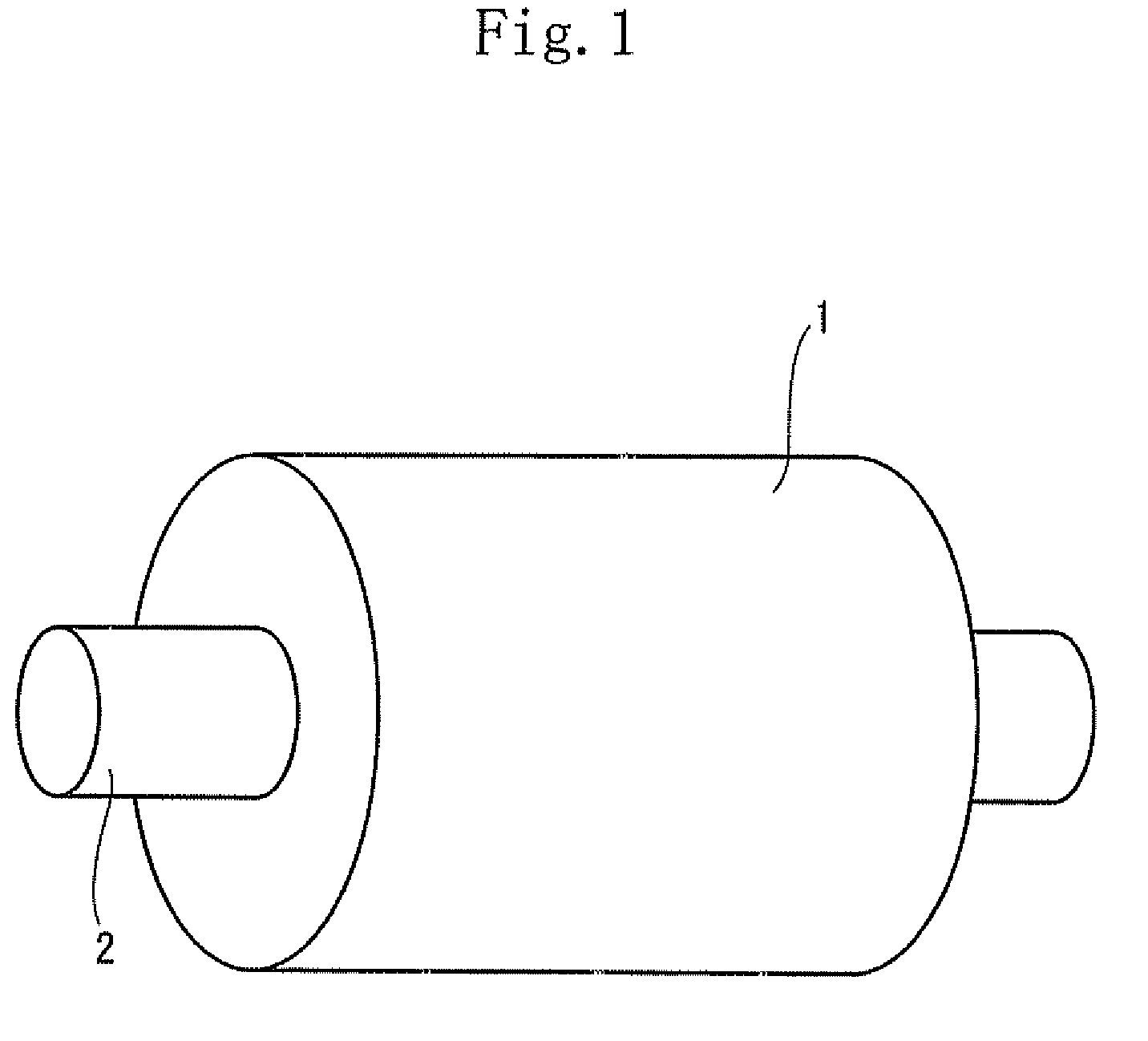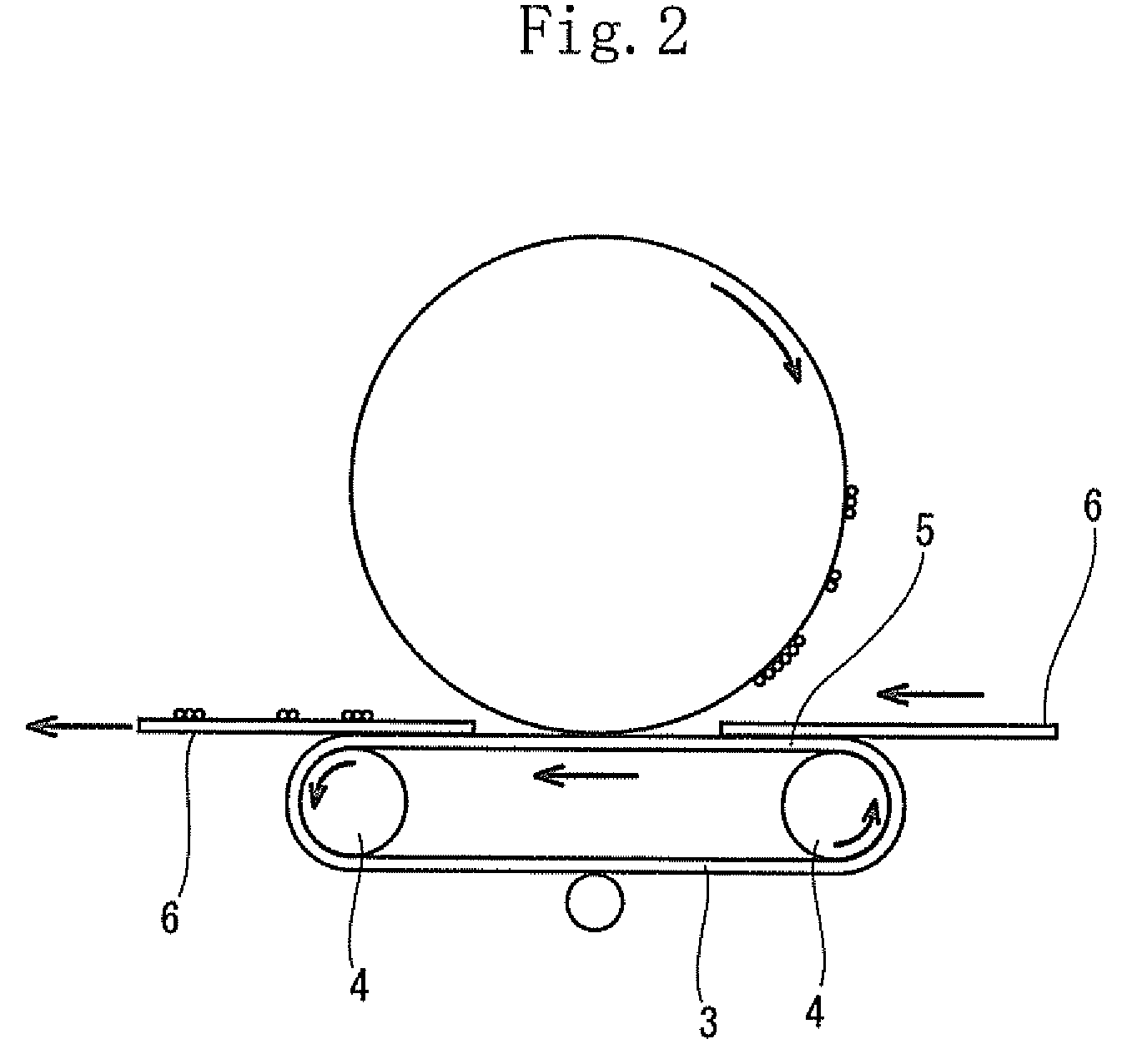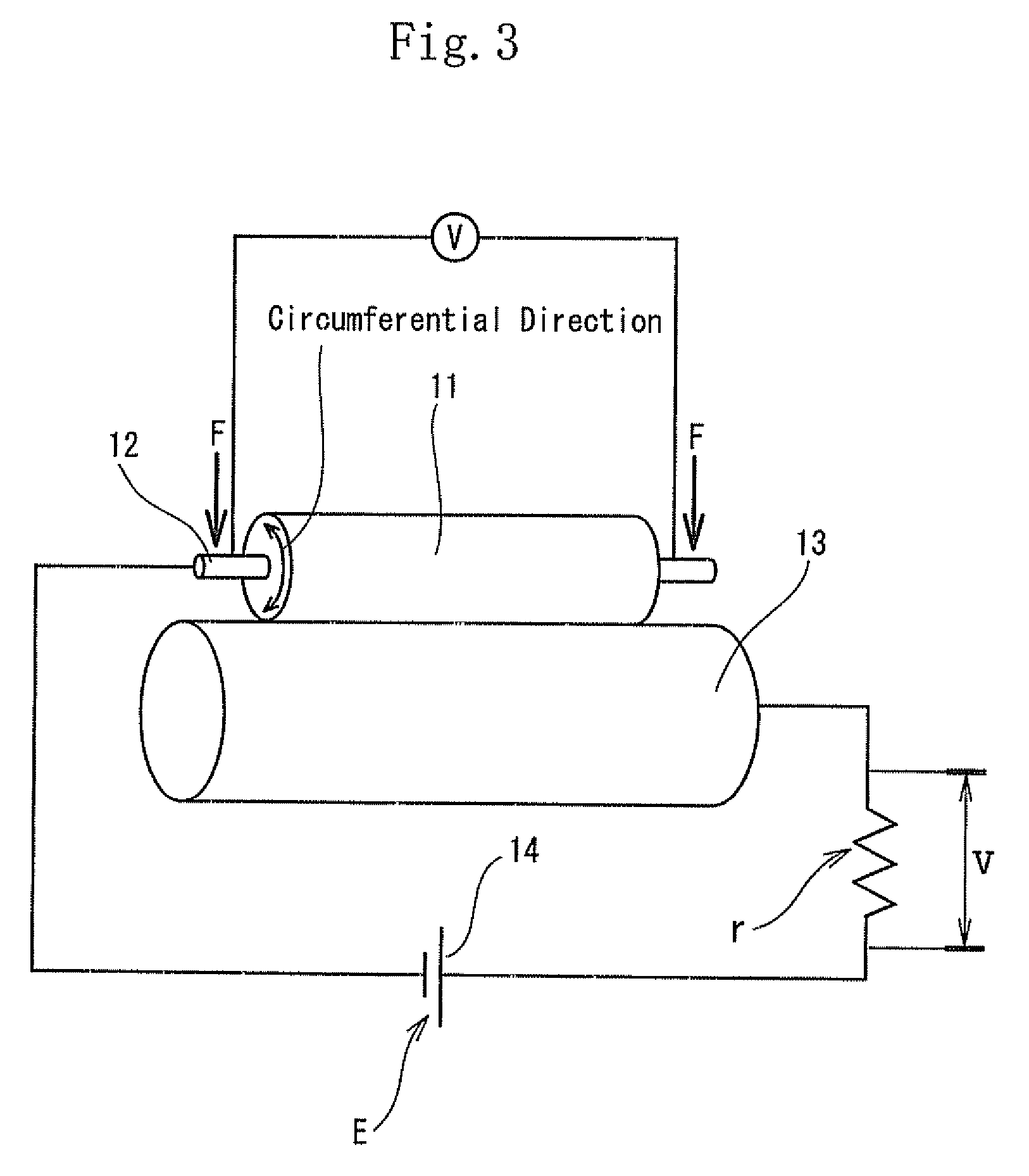The first method has a
disadvantage that the antistatic properties deteriorates greatly with a long elapse of time.
Thus it is difficult to use the polymer material treated with the charge prevention agent into conductive (antistatic) members as a durable antistatic resin or
elastomer.
In addition, the first method has another
disadvantage that the charge prevention agent migrates to other members of an image-forming apparatus or the like and stains them.
According to the conventional art, the charge prevention agent has a low degree of compatibility with the polymer material.
Thus the second method has a
disadvantage of deteriorating the properties thereof greatly.
Unless a large amount of the charge prevention agent is added to polymer material, polymer material is incapable of obtaining a sufficiently low electric resistance.
That is, the problem of the second method is that the addition of the charge prevention agent to polymer material deteriorates the properties thereof and makes the manufacturing cost high.
Further in dependence on the kind of the charge prevention agent, polymer material has a high electric resistance at a low temperature and
humidity and cannot display sufficient charge prevention performance.
This method allows charge prevention performance to be effective and continue for a long time and does not cause bleeding or blooming, but has a problem that it is impossible to color the resin or the rubber as desired.
Moreover, the addition of the
carbon black thickens the resin or the rubber, which leads to poor moldability in injection molding and
extrusion molding and the increase of the
hardness, deterioration of tensile elongation, tear strength, and
compression set.
Consequently the properties of the polymer material deteriorate and the material cost becomes high.
Thus it is very difficult to control the electric resistance of the polymer composition.
In addition, because it is difficult to disperse the
conductivity-imparting agents uniformly in the polymer composition, there occurs a problem of large variations of the electric resistance in a product formed from the polymer composition and among products.
Thus it is difficult to accomplish mechanical control of an image-forming process including charging, development, transfer, and fixing, which may lead to the increase of the manufacturing cost.
However, in the compositions disclosed in Japanese
Patent Application Laid-Open Nos. 64-9258, 2-255852, 10-182988, and 9-227743, the
plasticizer bleeds on the surface of a product and stains it.
When metals are packed with a film or a sheet formed from the antistatic composition containing the
chlorine-containing salt such as
lithium perchlorate, a
metal surface is corroded, rusted or stained.
Similarly, there is a possibility that a
metal shaft and a driving shaft are corroded at a
high humidity, when conductive products such as a conductive roller, a conductive belt, and the like, for use in a
copying apparatus, a printer, and the like, are formed from the antistatic composition containing the
chlorine-containing salt.
However, the compositions disclosed in these publications are liable to generate bleeding for resins such as
polyolefin,
polystyrene, and the like and elastomers having these structures and incapable of obtaining a low electric resistance.
When a large amount of the conductive filler is used to increase the performance of reducing the electric resistance of the polymer material, the dynamic properties thereof such as the
compression set and the
hardness deteriorate and the material cost becomes high.
However, as described above, the conventional ionic-conductive agent is incapable of reducing the electric resistance of the polymer composition efficiently and generates bleeding when it is used in a large amount.
Some ionic-conductive agents are unstable at a high temperature.
Thus they cannot be applied to resin or a
thermoplastic elastomer required to be processed at a high temperature.
Thus the manufacturing cost becomes high.
Thus the polymer cannot be used as it stands.
But it is difficult to reduce the electric resistance of the polymer composition sufficiently by using only the
acrylonitrile-butadiene rubber for the polymer composition to prevent it from being statically charged.
That is,
chlorine contained in the
quaternary ammonium salt makes a secondary reaction, which deteriorates the compression set of the rubber composition.
Accordingly the conductive roller or the conductive belt formed from the rubber composition has a problem in its durability and dimensional stability.
Thus the rubber composition cannot be put to practical use because the material cost is high, the
hardness thereof changes, stains a photosensitive member owing to the migration of an additive or the like contained therein, and generates bleeding.
Further because the polymer composition contains the
metal salt of the
perchlorate, the compression set of the polymer composition deteriorates.
Moreover because the low-molecular-weight compound used as the medium is not fixed to the polymer, it generates bleeding and stains the photosensitive member owing to the migration thereof.
The polymeric
solid electrolyte disclosed in Japanese Patent Application Laid-Open No. 8-34929 is capable of reducing the electric resistance thereof to some extent, but the low-molecular-weight
solvent used to disperse the salt adversely affects other properties of the polymeric
solid electrolyte.
Further the polymeric
solid electrolyte generates bleeding and stains the photosensitive member owing to the migration thereof.
 Login to View More
Login to View More 


